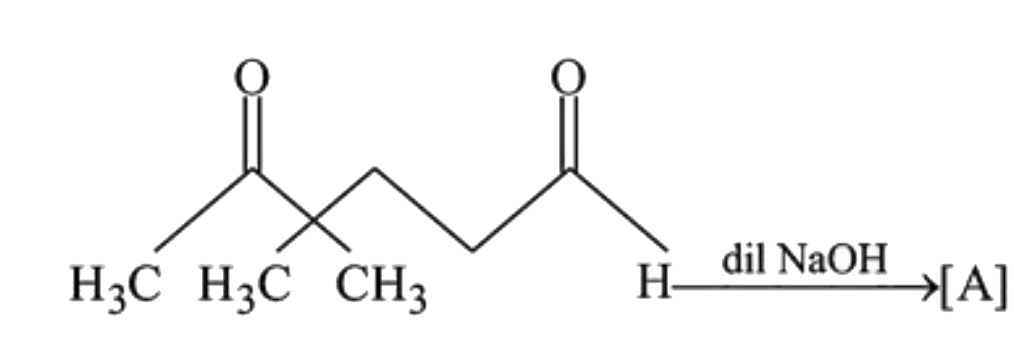In the manufacture of sodium carbonate, following reactions are involved:
(D) is a gas which is soluble in
(G) is . The other compound formed with (G) is
None of these
The correct Answer is:A
To solve the question regarding the manufacture of sodium carbonate and the identification of the other compound formed with (G), we will follow the steps outlined in the reactions provided.
1. Identify the Starting Material (A):
The process begins with calcium carbonate (CaCO3), which is heated to produce calcium oxide (CaO) and carbon dioxide (CO2).
CaCO3Δ→CaO+CO2(A→B)
2. Formation of Calcium Hydroxide (C):
Calcium oxide (B) reacts with water (H2O) to form calcium hydroxide (C).
CaO+H2O→Ca(OH)2(B+H2O→C)
3. Reaction with Ammonium Chloride (D):
Calcium hydroxide (C) reacts with ammonium chloride (NH4Cl) to produce ammonia (NH3) gas (D) and calcium chloride (CaCl2) along with water.
Ca(OH)2+NH4Cl→NH3(gas)+CaCl2+H2O(C+NH4Cl→D)
4. Dissolution of Ammonia (E):
The ammonia gas (D) dissolves in water to form ammonium hydroxide (E).
NH3+H2O→NH4OH(D+H2O→E)
5. Formation of Ammonium Bicarbonate (F):
Ammonium hydroxide (E) reacts with carbon dioxide (CO2) to form ammonium bicarbonate (F).
NH4OH+CO2→NH4HCO3(E+CO2→F)
6. Formation of Sodium Bicarbonate (G):
Ammonium bicarbonate (F) reacts with sodium chloride (NaCl) to produce sodium bicarbonate (G) and ammonium chloride (NH4Cl).
NH4HCO3+NaCl→NaHCO3+NH4Cl(F+NaCl→G)
7. Heating of Sodium Bicarbonate:
Sodium bicarbonate (G) is then heated to produce sodium carbonate (Na2CO3), carbon dioxide (CO2), and water (H2O).
NaHCO3Δ→Na2CO3+CO2+H2O(G→Na2CO3)
Conclusion:
The other compound formed with (G) when sodium bicarbonate (NaHCO3) is produced is ammonium chloride (NH4Cl).
The process begins with calcium carbonate (CaCO3), which is heated to produce calcium oxide (CaO) and carbon dioxide (CO2).
CaCO3Δ→CaO+CO2(A→B)
Calcium oxide (B) reacts with water (H2O) to form calcium hydroxide (C).
CaO+H2O→Ca(OH)2(B+H2O→C)
Calcium hydroxide (C) reacts with ammonium chloride (NH4Cl) to produce ammonia (NH3) gas (D) and calcium chloride (CaCl2) along with water.
Ca(OH)2+NH4Cl→NH3(gas)+CaCl2+H2O(C+NH4Cl→D)
The ammonia gas (D) dissolves in water to form ammonium hydroxide (E).
NH3+H2O→NH4OH(D+H2O→E)
Ammonium hydroxide (E) reacts with carbon dioxide (CO2) to form ammonium bicarbonate (F).
NH4OH+CO2→NH4HCO3(E+CO2→F)
Ammonium bicarbonate (F) reacts with sodium chloride (NaCl) to produce sodium bicarbonate (G) and ammonium chloride (NH4Cl).
NH4HCO3+NaCl→NaHCO3+NH4Cl(F+NaCl→G)
Sodium bicarbonate (G) is then heated to produce sodium carbonate (Na2CO3), carbon dioxide (CO2), and water (H2O).
NaHCO3Δ→Na2CO3+CO2+H2O(G→Na2CO3)
The other compound formed with (G) when sodium bicarbonate (NaHCO3) is produced is ammonium chloride (NH4Cl).
Topper's Solved these Questions
- S-BLOCK GROUP 1 - ALKALI METALSBOOK - CENGAGE CHEMISTRY ENGLISHCHAPTER - S-BLOCK GROUP 1 - ALKALI METALSEXERCISE - Exercises Multiple Correct
34 Videos
- S-BLOCK GROUP 1 - ALKALI METALSBOOK - CENGAGE CHEMISTRY ENGLISHCHAPTER - S-BLOCK GROUP 1 - ALKALI METALSEXERCISE - Exercises Single Correct
100 Videos
- S-BLOCK GROUP 1 - ALKALI METALSBOOK - CENGAGE CHEMISTRY ENGLISHCHAPTER - S-BLOCK GROUP 1 - ALKALI METALSEXERCISE - Ex 4.1 (Objective)
17 Videos
- REDOX REACTIONSBOOK - CENGAGE CHEMISTRY ENGLISHCHAPTER - REDOX REACTIONSEXERCISE - Archives (Integers)
1 Videos
- S-BLOCK GROUP 2 - ALKALINE EARTH METALSBOOK - CENGAGE CHEMISTRY ENGLISHCHAPTER - S-BLOCK GROUP 2 - ALKALINE EARTH METALSEXERCISE - Ex 5.1 Objective
2 Videos
Similar Questions
In the manufacture of sodium carbonate, following reactions are involved:
(A)Δ−−→(B)+CO2
(B)+H2O→(C)+NH4Cl→(D)+H2O−−−−→ESolution
(E)+CO2→(F)
(F)+NaCl→(G)Heat−−→Na2CO3+CO2+H2O
(D) is a gas which is soluble in H2O
(E ) and (F) are
View SolutionIn the manufacture of sodium carbonate, following reactions are involved:
(A)Δ−−→(B)+CO2
(B)+H2O→(C)+NH4Cl→(D)+H2O−−−−→ESolution
(E)+CO2→(F)
(F)+NaCl→(G)Heat−−→Na2CO3+CO2+H2O
(D) is a gas which is soluble in H2O
The name of the process is
View SolutionAΔ−−→B (oxide) +CO2
B+H2O→C
C+CO2→A (milky)
C+NH4CIΔ−−→D (gas)
D+H2O+CO2→E
E+NaCI→F
FΔ−−→Na2CO3+CO2+H2O
D,E and F are:
View SolutionAΔ−−→B (oxide) +CO2
B+H2O→C
C+CO2→A (milky)
C+NH4CIΔ−−→D (gas)
D+H2O+CO2→E
E+NaCI→F
FΔ−−→Na2CO3+CO2+H2O
B and C are:
View SolutionAΔ−−→B (oxide) +CO2
B+H2O→C
C+CO2→A (milky)
C+NH4CIΔ−−→D (gas)
D+H2O+CO2→E
E+NaCI→F
FΔ−−→Na2CO3+CO2+H2O
A is:
View SolutionAΔ−−→B (oxide) +CO2
B+H2O→C
C+CO2→A (milky)
C+NH4CIΔ−−→D (gas)
D+H2O+CO2→E
E+NaCI→F
FΔ−−→Na2CO3+CO2+H2O
Name of the process is:
View Solution Hdil NaOH−−−−→[A]H2O+−−−→Δ[B]
Hdil NaOH−−−−→[A]H2O+−−−→Δ[B]
View SolutionComplete the following reactions
(a)XeF4+H2O→
(b )XeF6+H2→
(c)XeF6+H2O→
(d)XeF6+NH3→
View SolutionIdentify (A) to (G) in the following scheme and name the process.
CaCO3Δ−−→(A)+(B)gas,(A)+H2O→(C)
(C)+B→CaCO3+H2O(D)+(C)Δ−−→(E)gas
(E)+H2O+(B)→(F),NaCI+(F)→(G)+(D)
(G)Δ−−→Na3CO3+H2O+(B)
View SolutionSiCl4H2O−−→(A)Heat−−→(B)Na2CO3−−−−→Heat(C),
The compound (C ) is
View Solution
